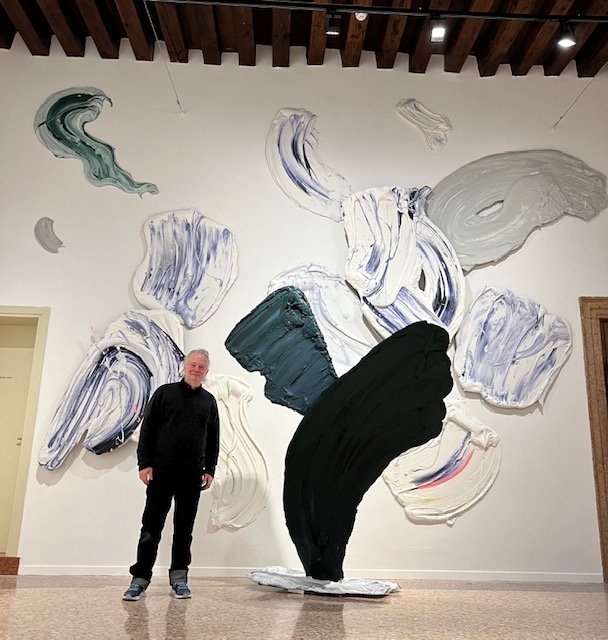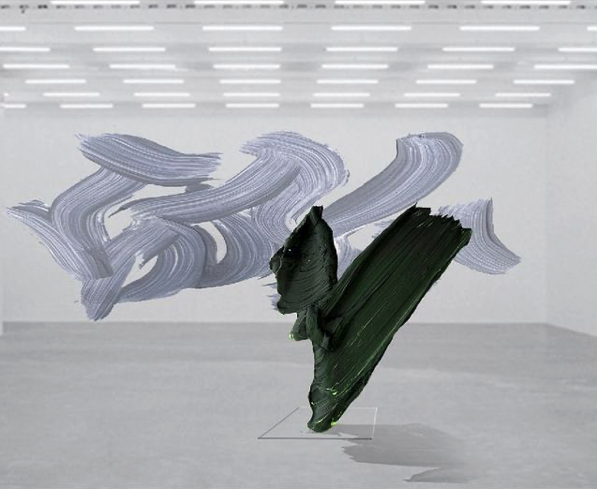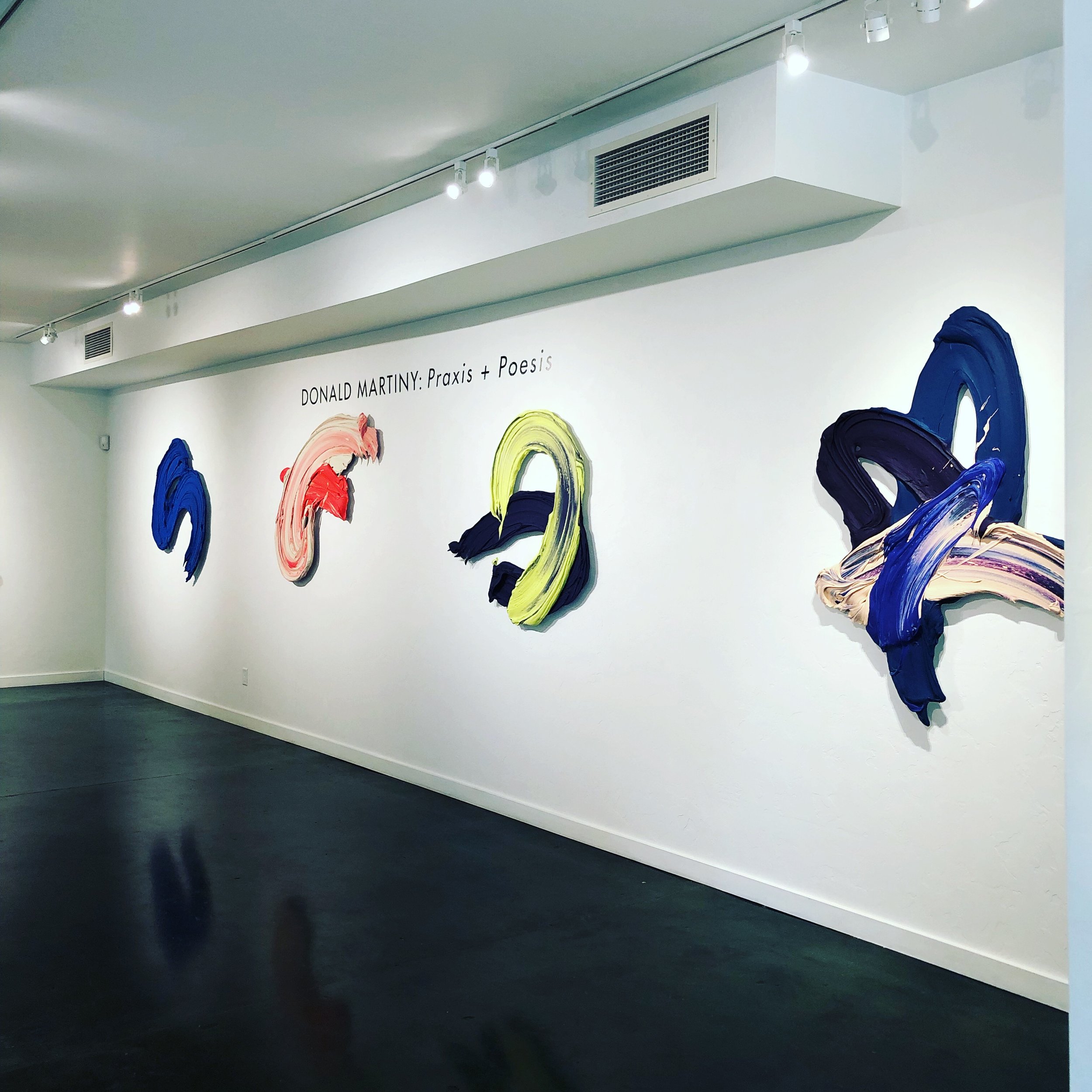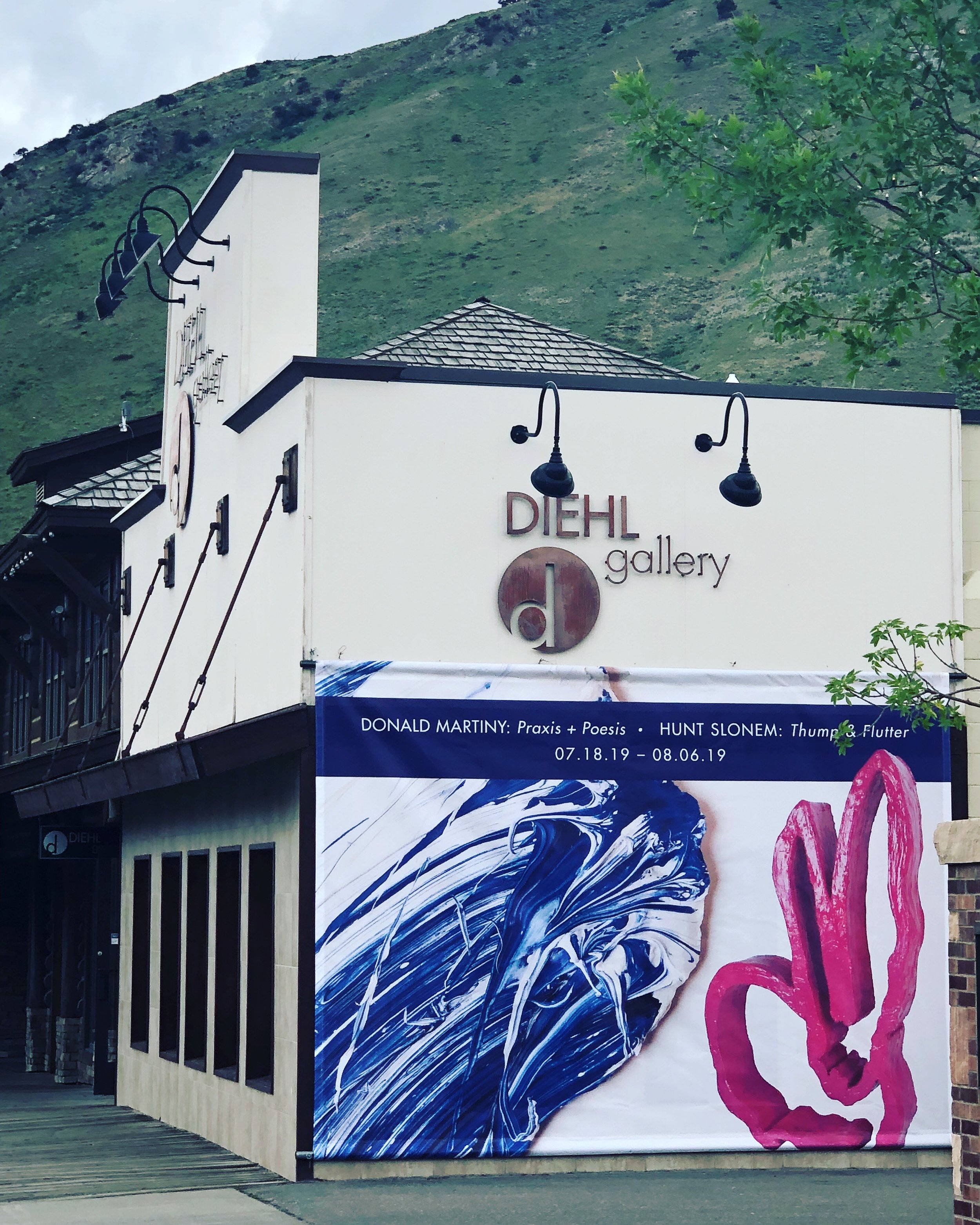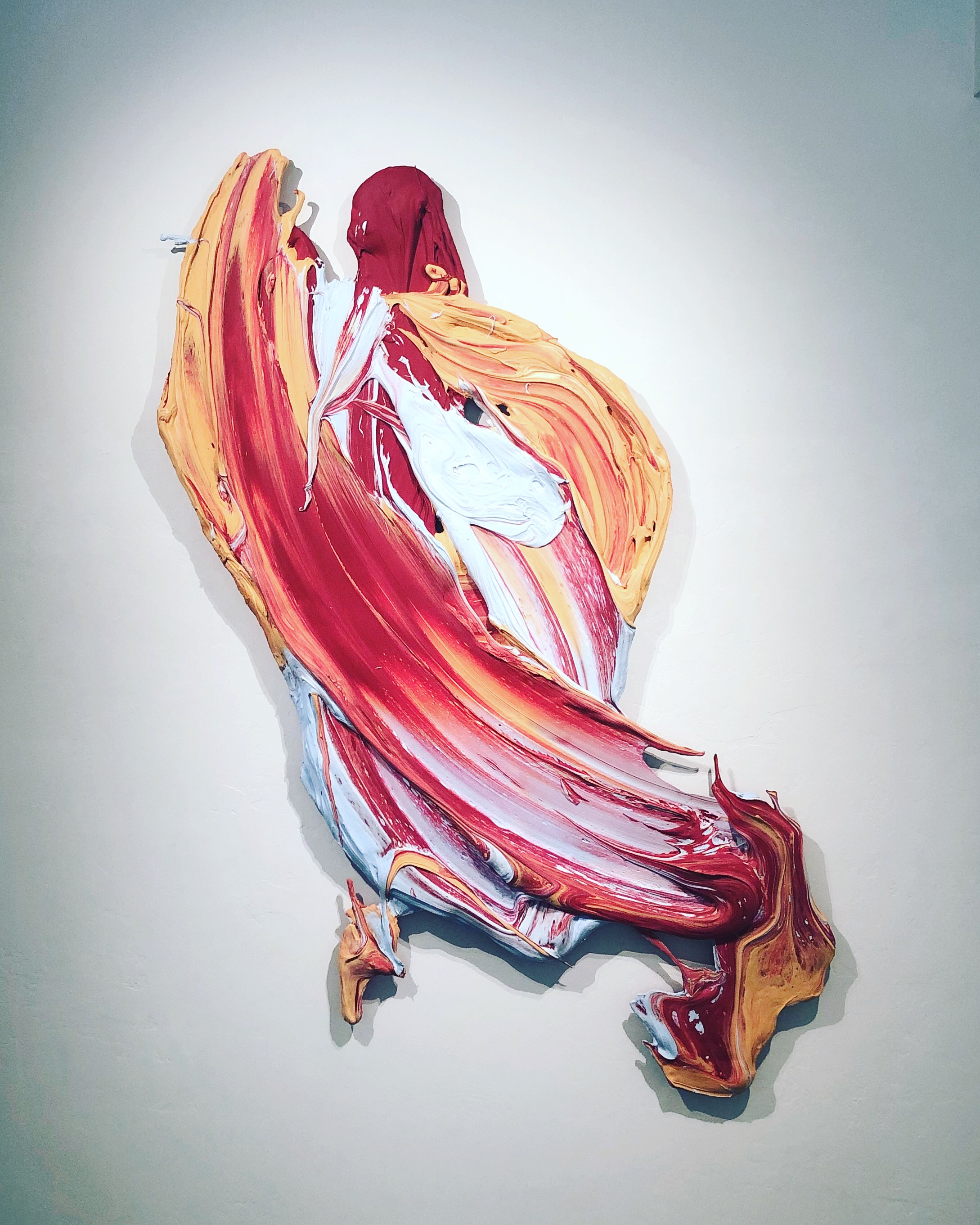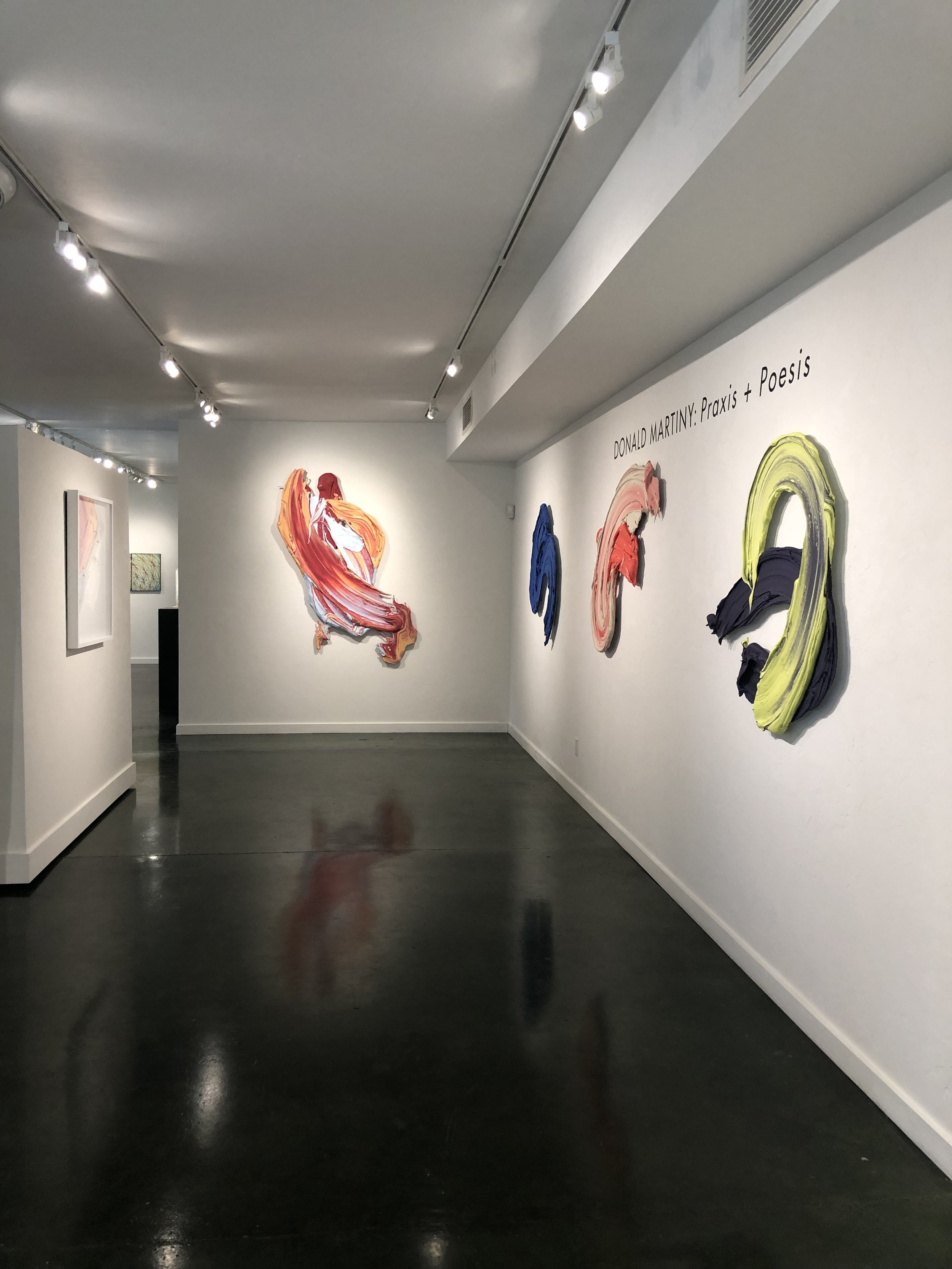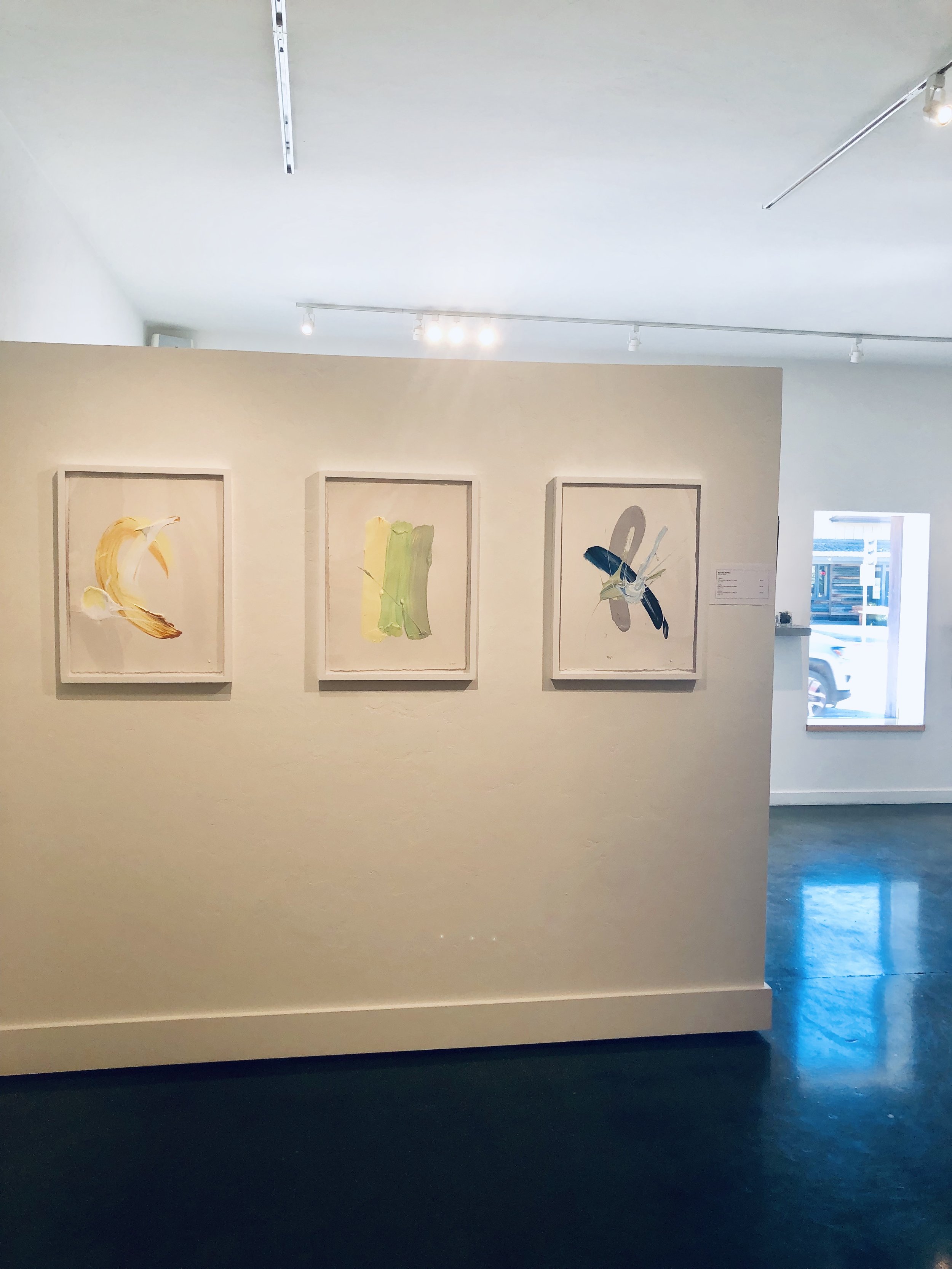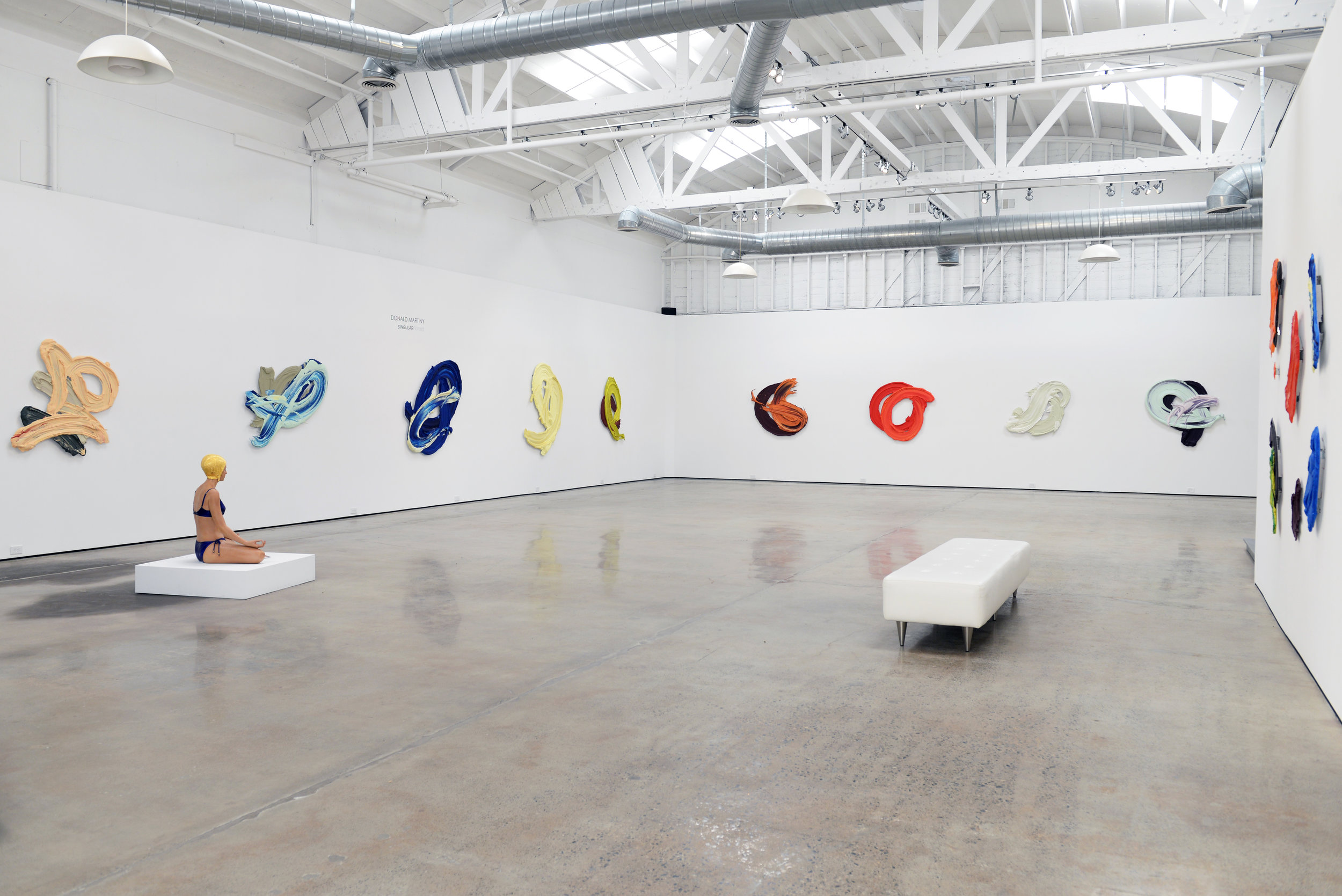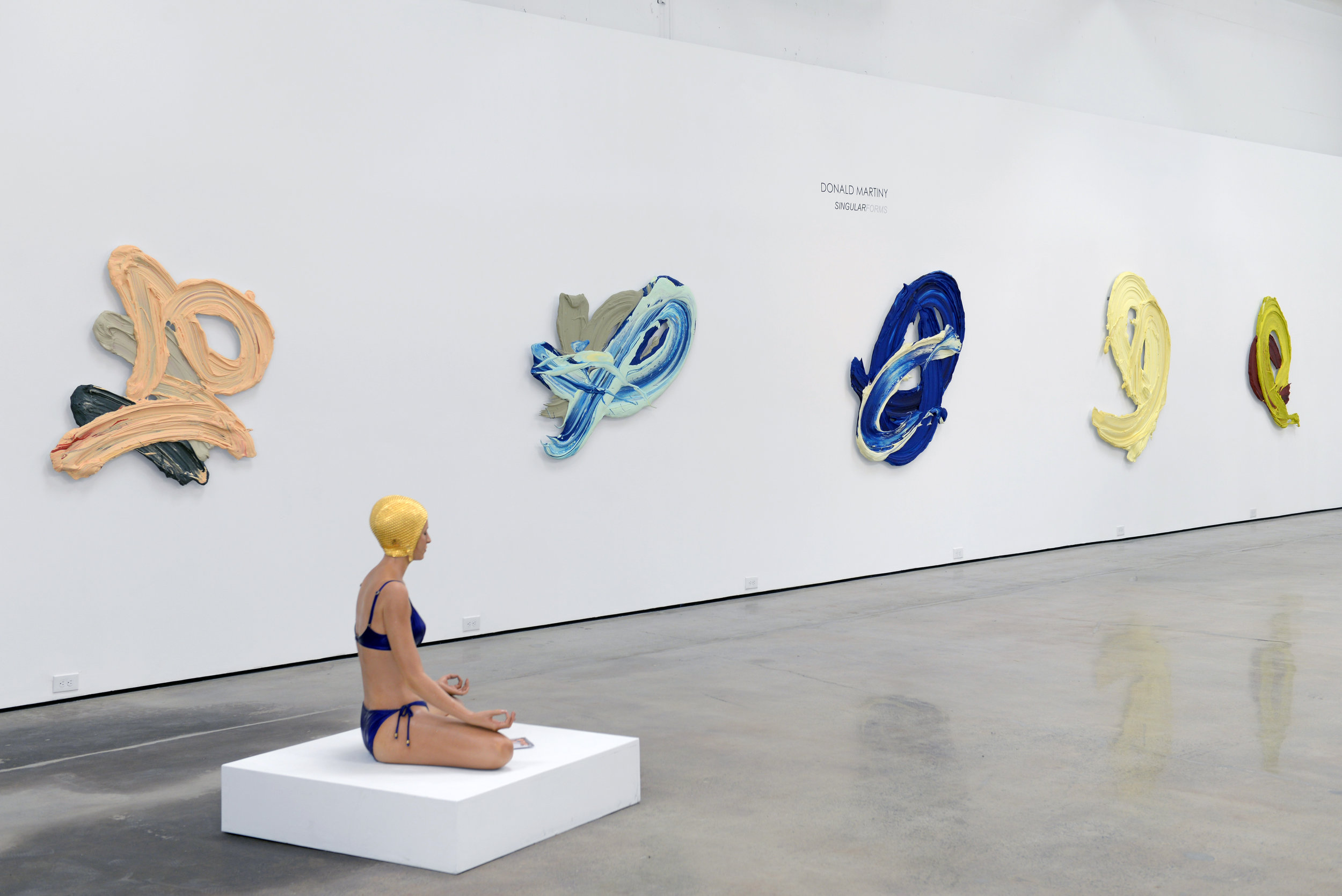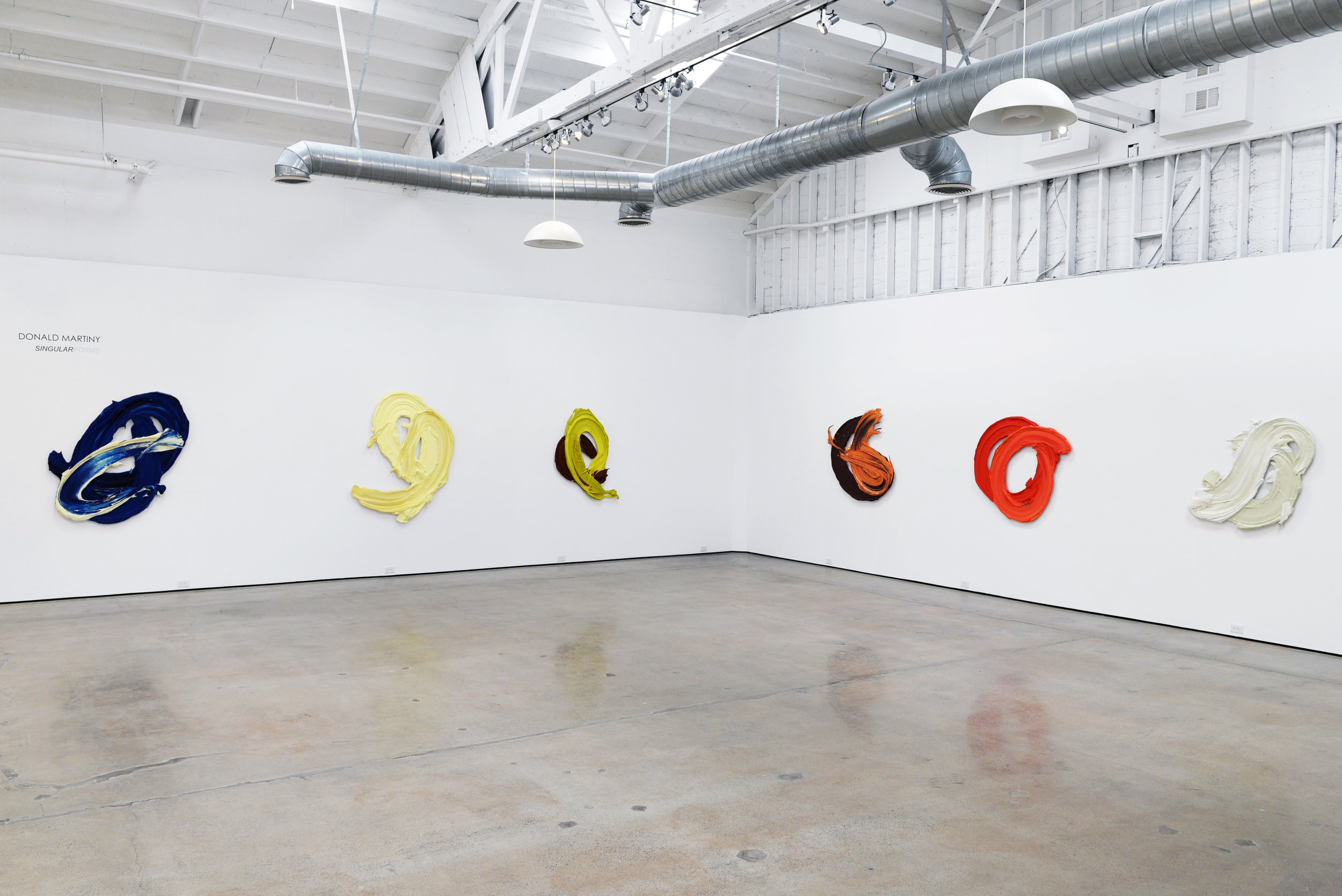In honor of Donald Martiny’s inclusion in the PERSONAL STRUCTURES Exhibition at the 59th Venice Biennale, Madison Gallery announces TIME SPACE EXISTENCE a retrospective of the artist’s important works dating from 2013 to the present. Many of these works were included in Donald Martiny’s first major solo exhibition, Freeing the Gesture at the Fort Wayne Museum of Art, and are available for private acquisition for the first time.
“In the 1950s, artists like Jackson Pollock and Franz Kline elevated the gesture to the position of the protagonist in abstract expressionism. In the 21st century, Donald Martiny advances that idea considerably further by freeing the gesture of gestural abstraction from the substrate which, heretofore, provided the context that brought gesture to life. Working with polymers and dispersed pigments, Mr. Martiny has developed a methodology that enables him to isolate his sumptuous, almost sculptural, brushstrokes and lift them off the page, so to speak. The nature of his material is such that Mr. Martiny can work on a much larger scale than if he were dependent on a canvas surface; indeed, each singular brushstroke might range from two- to as much as six feet in length. Installed, these compelling monochromatic gestures immediately breathe a new kind of life into the gallery space.
Historically, Mr. Martiny’s work to date fits right into the continuum of monochromatic painting, a contemporary reductive movement that has advanced the concerns and broadened the interests of the classic Minimalists of the 1960s and of the much earlier Suprematists, who openly sought the ‘death of painting” with their monochromatic efforts. Mr. Martiny belongs to a family of painters, including such luminaries as Kazimir Malevich, Alexander Rodchenko, Ad Reinhardt, Barnett Newman, Frank Stella, and Olivier Mossett. Amazingly, these distinguished artists brought something noticeably different to this admittedly singular and restrictive approach to painting. Before Mr. Martiny, though, each of these other great painters relied on manipulating the relationship between canvas and pigment to achieve subtle, nuanced differences in each painting. Mr. Martiny has greatly expanded the painterly agenda by taking the brushstroke completely off the canvas entirely. I applaud his commitment to furthering the monochromatic agenda and his ability to make fresh, new work that acknowledges, rather than negates, decades of previous good work. Rather than hastening the death of painting as Rodchenko forecast, monochromatic painting has already enjoyed a long lifeline and, in the hands of Donald Martiny, is alive and well.”
Charles Shepard III, Director, Ft Wayne Museum of Art.
For more information visit www.madisongalleries.com.

